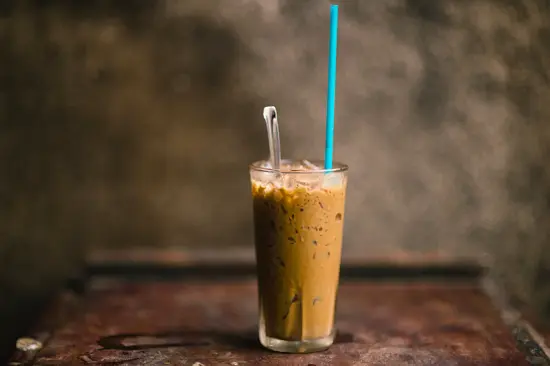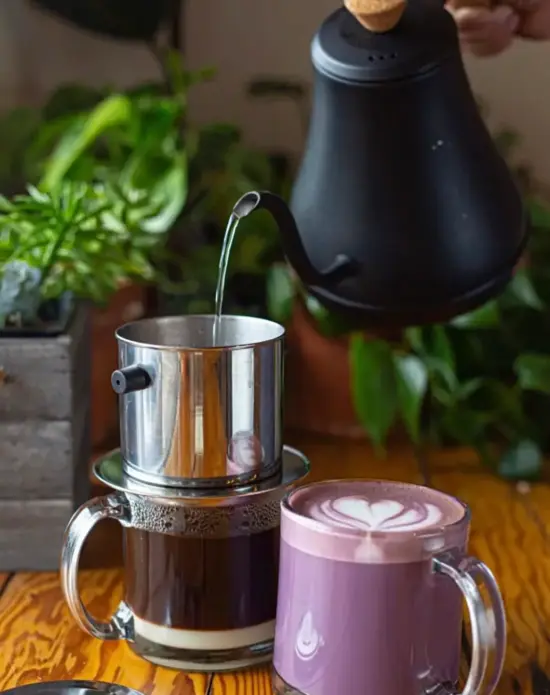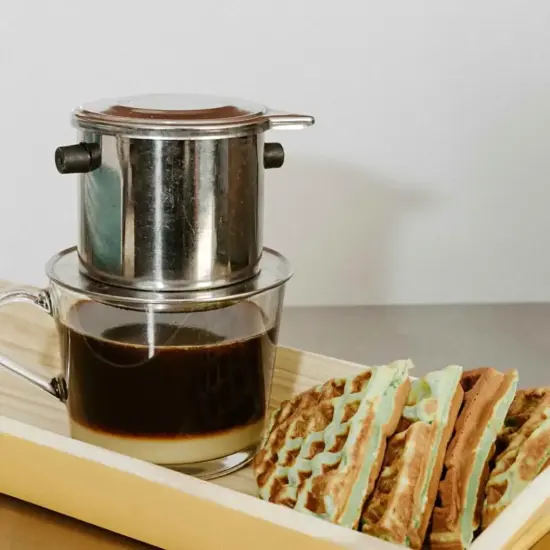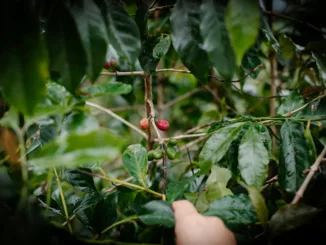
We learn more about condensed milk—which has become an integral part of cuisine in many places around the globe—and offer a Vietnamese iced coffee recipe.
BY EMILY JOY MENESES
BARISTA MAGAZINE ONLINE
Featured photo by TheUjulala via Pixabay
As a person of Southeast Asian descent, I grew up seeing condensed milk as an everyday ingredient—a pantry staple that could be used in a multitude of ways. Throughout my parents’ home country, the Philippines—as well as other Southeast Asian countries like Vietnam and Cambodia—condensed milk is a common addition to both food dishes and beverages. Ever had Vietnamese iced coffee? If so, you know that the sweet, syrupy taste of condensed milk serves as the perfect counterpoint to the smokiness of dark-roast robusta coffee, creating a bold beverage that packs as much of a punch with flavor as it does with caffeine.
To most, it’s a bit of a mystery how condensed milk, an American invention, came to be such an integral aspect of Southeast Asian cuisine and the global culinary world at large. Today, we’ll trace the history of condensed milk, the ways in which it’s used around the world, and how you can incorporate condensed milk into coffee beverages at home.

The Origins of Condensed Milk
Canned condensed milk was first invented in the 1850s by an American newspaper publisher and inventor named Gail Borden. At the time, refrigeration was nearly nonexistent. An alternative to fresh milk was needed—especially for parents looking for safe ways to feed their infants. In fact, the invention of canned milk led to a significant drop in infant mortality in the United States.
Throughout the last few decades of the 1800s, canned milk would become a major product in the Western world. In the 1900s, it became known as a wartime food, serving as a go-to amongst soldiers who needed portable, calorie-packed foods during World Wars I and II. Canned milk would then gradually make its way around the globe, becoming especially useful throughout Southeast Asia and other regions that had little access to fresh milk.
Different Uses of Condensed Milk
In Southeast Asia alone, condensed milk is used in a variety of ways—in baked goods, ice cream, shaved ice, and more. You can find condensed milk in both Vietnamese and Cambodian iced coffee. They both use dark-roasted coffee and, at times, other spices like chicory, cloves, and cardamom. You’ll also see condensed milk in regions outside of Asia: Scotland, Brazil, and the United Kingdom, for example, all use condensed milk in a variety of candies and desserts.

Recipe: Traditional Cà Phê Sua Dá
Want to try making cà phê sua dá (Vietnamese iced coffee) at home? All you’ll need is some dark-roast coffee, condensed milk, and ice. I recommend brewing your coffee the traditional way, in a phin filter.
A phin filter consists of three parts: the body (the main cylinder-shaped centerpiece where the coffee grounds go), the filter disk (which goes into the body and lies on top of the grounds), and the lid (which keeps the coffee from losing heat while brewing).
Ingredients:
- 1-1.5 tablespoons of dark-roast coffee (Traditional cà phê sua dá recipes typically use Café du Monde coffee, but we love Portland Cà Phê’s selection of coffees, which founder and owner Kim Dam sources from Vietnam and roasts herself in PDX.)
- 2 teaspoons condensed milk (adjust to taste)
- 1 cup boiling water
Directions:
Preheat your filter by pouring a bit of hot water through it.
Place your filter above your mug/cup and remove the metal filter disk to place your coffee grounds into the body.
Place the filter disk back on top of the coffee grounds, gently pressing down.
Pour in your boiling water until the filter is filled. Place the lid on top of the filter and let the coffee brew until all of the water has dripped down through the filter.
Stir your condensed milk into your coffee and top it with crushed ice. You can also leave the ice out if you prefer to drink your Vietnamese coffee hot.

Condensed Milk Today
Many cafés like Portland Cà Phê are honoring the historical and cultural significance of condensed milk by incorporating it into café beverages. Today, the ingredient remains a long-standing part of the food and beverage world. It’s a reminder that what we consume today is influenced by centuries of invention and trade.
ABOUT THE AUTHOR
Emily Joy Meneses (she/they) is a writer and musician based in Los Angeles. Her hobbies include foraging, cortados, vintage synths, and connecting with her Filipino roots through music, art, food, and beverage.




